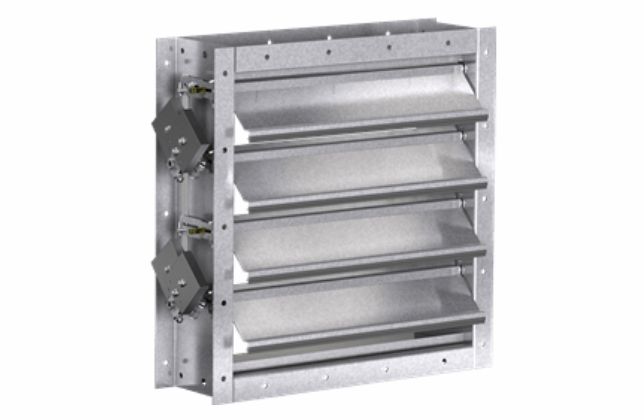Pressure Relief Damper
Truestar Air Systems
Pressure Relief Damper
A pressure relief damper is a mechanism, which is designed to maintain the adjusted pressure difference between a room and exterior or between any two rooms. Generally, these dampers are used as safety or controlling devices. If you would like to prevent the pollution of the inside or external with biological or chemical contaminated air, then you need to make your pressure relief damper installation project more professional, functional, and resourceful.

Through ventilation and duct systems, a properly installed will considerably help you relieve the pressure of the polluted air inside and outdoors quickly and efficiently. For this reason, any qualified pressure relief damper installer will ensure that the installation is completed in accordance with the requirements of the industrial design. Additionally, you may alter this to precisely suit your needs and preferences.
When compared to other nations throughout the world, prices in India are generally lower. However, by using the installation services of a reputable Indian firm, you may make your installation process more affordable and professional.
Function: A pressure relief damper’s main job is to keep ductwork from being too pressurised. The pressure relief damper opens to release extra pressure in the duct system when it reaches a predetermined threshold, protecting the HVAC system and ductwork from harm.
Operation: In normal operation, pressure relief dampers are usually fitted with spring-loaded blades or louvres that stay closed. The blades or louvres automatically open to let air escape and lower the pressure inside the duct system when the pressure in the ductwork surpasses the setpoint.
Design: Blade-style and louver-style pressure relief dampers are two of the many styles that are available. Louver-style dampers have slanted slats that open and close to regulate airflow, whereas blade-style dampers have several blades that pivot on a central axis. Space limitations, pressure ratings, and airflow requirements are only a few of the variables that affect the damper’s design.
Construction: To endure the rigours of HVAC operation, pressure relief dampers are usually made of materials like stainless steel, aluminium, or galvanised steel. Mounted inside a frame or housing, the blades or louvres may have gaskets or seals to guarantee an airtight closure.
Control: Depending on the demands and particular application, pressure relief dampers can be operated electrically, pneumatically, or manually. While pneumatic and electronic dampers can be remotely controlled via a control system or building automation system, manual dampers are normally changed by hand.
Code Compliance: To guarantee the safe operation of HVAC systems, pressure relief dampers are frequently mandated by building codes and regulations. To guarantee that pressure relief dampers are installed and maintained properly, adherence to pertinent codes and standards, such as NFPA 90A (Standard for the Installation of Air-Conditioning and Ventilating Systems), is necessary.

